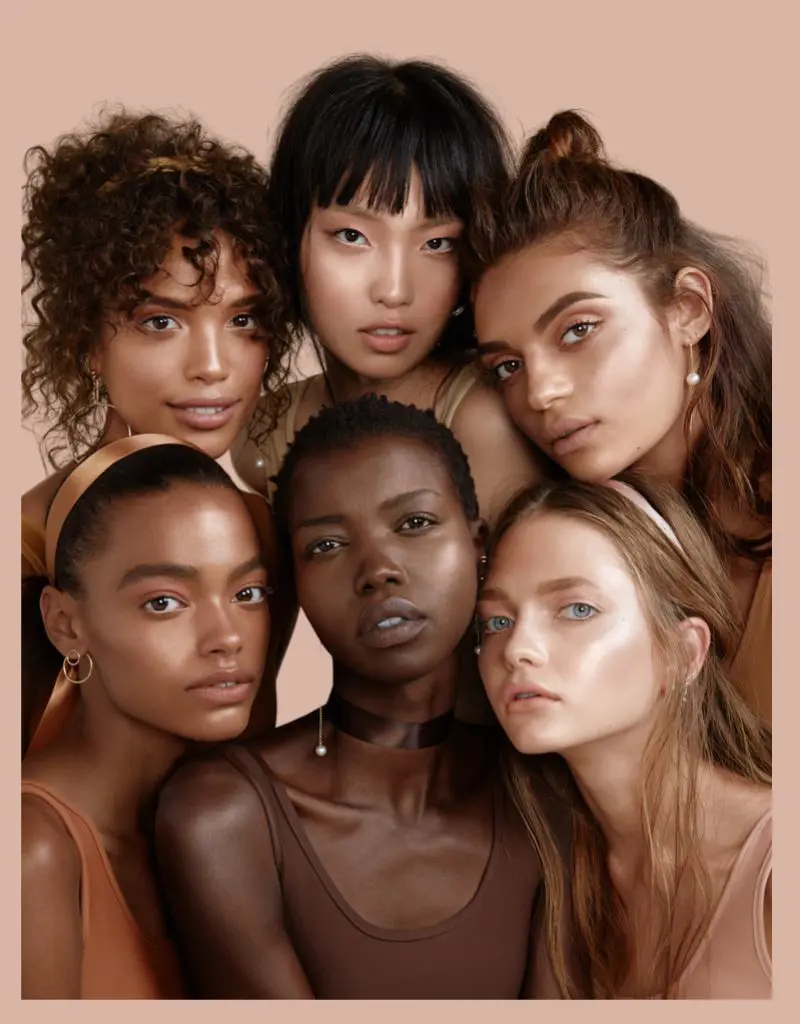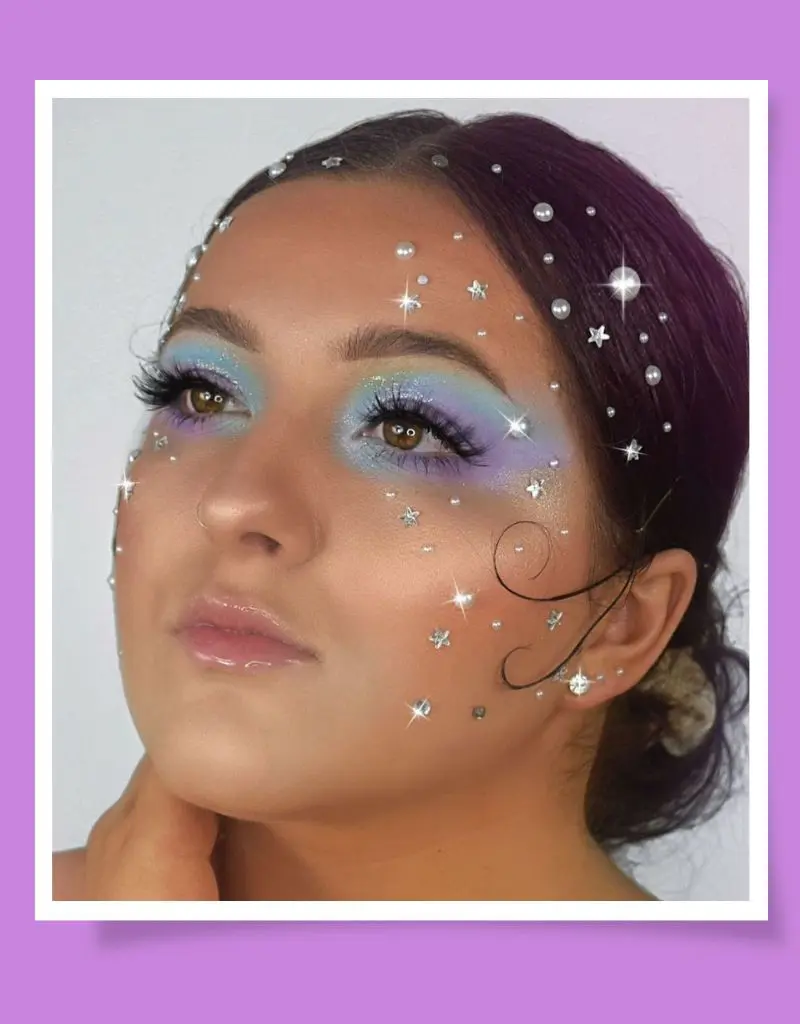From the warm, sun-kissed hues of deep mahogany to the delicate, porcelain shades reminiscent of moonlight, each skin tone tells a unique story of heritage, geography, and individual identity. In fact, these tones are a beautiful spectrum that reflects the rich diversity of humanity.
Moreover, this kaleidoscope encompasses a myriad of undertones—cool blues, warm reds, and neutral beiges—that contribute to the endless variations we observe. Understanding and celebrating this range not only promotes inclusivity but also fosters a deeper appreciation for the vibrant tapestry of human existence, where every shade is a testament to the fascinating narratives etched in our skin.
How To Determine Your Undertone?

Determining your skin tone is like discovering your own unique color palette, but finding out the hidden clue can be donating at times. But don't you worry, as we have found three different magical options to help you find out the color of your skin tone!
Basically, there are two simple ways to examine the hidden undertones-
1. One simple way is to examine the veins on your wrist-
- If they appear more blue, you likely have cool undertones. If they lean towards green, warm undertones are probable.
2. Consider how your skin reacts to the sun, like if it tans effortlessly or if the struggle is real??
- If you burn easily and struggle to tan, you might have cooler undertones. If you tan effortlessly, warm undertones are probable.
Not to forget, experimenting with different colored clothing near your face can also provide visual clues. Therefore, understanding your skin tone is not just about aesthetics; it's a key to selecting makeup, clothing, and hair colors that harmonize with your natural radiance.
How To Find Your Skin Tone?

Skin tones are a reflection of the pigments present in our skin, and they are broadly categorized into four main types - fair, light, medium, and dark. Each type encompasses a range of shades influenced by melanin levels, which is the pigment responsible for skin color.
To make better choices in life regarding your choices in clothing, makeup, and hair colors, helping you highlight your unique beauty, it is really essential to learn and understand your skin tone within these categories. Also, it's important to note that these are general categories, and individual variations exist within each type.
1. Fair

Typically, individuals with fair skin have a delicate and light appearance with subtle undertones which are determined by some key characteristics, such as -
Color Description
- Fair skin often has a pale or light beige appearance, and it may have hints of pink, peach, or golden undertones.
Sun Reaction
- Individuals with fair skin are more prone to sunburn and may have difficulty tanning. Freckles are also common on fair skin.
Vein Color
- Veins on the wrist may appear more blue, indicating cooler undertones.
Best Colors
Soft pastels, cool tones, and light neutrals complement fair skin, such as - baby pink, lavender, mint green, and cool blues.

Makeup Considerations
- When choosing makeup for fair skin, lighter shades of foundation and blush are often suitable.
- Cool-toned eyeshadows and lip colors can complement the fair complexion.
Clothing Choices
- Pastel-colored clothing, as well as shades of white, look elegant on individuals with fair skin.
- It's advisable to avoid overly vibrant or dark colors that may contrast sharply.
Remember that individual variations exist, and personal preferences play a significant role in choosing colors that make you feel confident and comfortable. Fair skin is just one beautiful point on the diverse spectrum of human skin tones.
2. Light Skintone

Light skin tone encompasses a range of complexions that fall between fair and medium tones. Here are some key features and considerations associated with light skin:
Color Description
- Light skin tones can vary from pale beige to a light, golden complexion.
- The undertones may include subtle hints of pink, peach, or yellow.
Sun Reaction
- Individuals with light skin may tan lightly, but they are more susceptible to sunburn compared to those with medium or dark skin tones.
Vein Color
- The veins on the wrist may appear blue or green, depending on the undertones present in the skin.
Best Colors
- Earth tones, soft pastels, and muted shades complement light skin tones like beige, light coral, soft blues, and olive green.

Makeup Considerations
- Lighter shades of foundation and concealer are suitable for individuals with light skin.
- Warm or neutral eyeshadows and lip colors often work well to create a harmonious look.
Clothing Choices
- Light skin tones can be complemented by a wide range of colors like earthy tones, and pastels.
- Lighter shades of various colors can also be flattering on light skin while overly dark or vibrant colors may create stark contrasts.
Understanding your specific undertones within the light skin category can further refine color choices for clothing, makeup, and accessories. Thus, embracing the beauty of light skin involves celebrating its unique characteristics and finding colors that enhance your individual glow.
3. Medium Skin tone

Medium skin tone has a diverse range of complexions with various undertones, so, here are key features and considerations associated with medium skin:
Color Description
- Medium skin tones range from olive to caramel hues, representing a balance between fair and dark skin. The undertones can include warm golden, olive, or neutral tones.
Sun Reaction
- Individuals with medium skin tones often tan easily and may have a moderate resistance to sunburn. This ability to tan provides a natural sun-kissed appearance.
Vein Color
- The veins on the wrist may appear blue or green, depending on the specific undertones present in the skin.

Best Colors
- Warm tones such as browns, oranges, deep greens, and earthy hues complement medium skin tones.
- Jewel tones and rich shades can also enhance the natural warmth of the complexion.
Makeup Considerations
- These tones can accommodate a wide range of makeup shades like warm and neutral-toned foundations.
- A variety of eyeshadows and lip colors like dusty pink, soft rose, peach, jade green, taupe, grey, off-white and blue can be flattering.
Clothing Choices
- Medium skin tones can carry both warm and cool colors well.
- Earth tones, rich blues, greens, and warm reds are often complementary while avoiding colors that are too light or too dark.
4. Dark Skin Tone

Dark skin tone refers to individuals with a deeper and richer complexion commonly associated with people of African, Afro-Caribbean, South Asian, and Middle Eastern descent. They are often characterized by rich, deep hues that range from deep browns to ebony.
Although individuals from various ethnic backgrounds can have dark skin tones, it is important to note that skin tone can vary greatly within these groups, as there is a wide range of shades and undertones within the category of dark skin.
Here are key features and considerations associated with dark skin:
Color Description
- Dark skin tones encompass a broad spectrum, exhibiting rich, dark pigmentation.
- The undertones can vary, including warm browns, cool blues, or neutral tones.
Sun Reaction
- Individuals with dark tones have a higher resistance to sunburn and are less prone to sun damage.
- Dark skin often tans easily, providing natural protection against UV rays.
Vein Color
- The veins on the wrist may appear more green, suggesting warmer undertones.

Best Colors
- Jewel tones, deep reds, purples, and earthy tones complement the richness of dark complexions.
Makeup Considerations
- Deep foundations, bold eyeshadows, and vibrant lip colors like plum, berry, coral, and brown shades accentuates the features beautifully.
Clothing Choices
- Dark skin people can pull off an array of colors, from bright and bold to deep and muted.
- Vibrant yellows, blues, reds, and greens can be particularly stunning, while lighter pastels and neutrals can also be elegant.
Celebrating the beauty of dark skin involves embracing its depth and richness which is incredibly versatile and can carry a wide range of colors with confidence. Thus, recognizing the diversity within the dark skin category allows for individualized choices that enhance and highlight unique features.
Difference Between Skin Tone And Skin Undertone

The terms "skin tone" and "skin undertone" are often used in discussions about personal care, cosmetics, and fashion. But understanding the difference between them is crucial for making informed choices in areas such as makeup, clothing, and skincare.
Skin Tone
1. Definition -
Skin tone refers to the overall color of your skin, ranging from fair to light, medium, and dark. It's the visible color you see when you look at your skin without considering the subtle variations or underlying pigments.
2. Determination -
Skin tone is typically categorized into broad groups such as fair, light, medium, and dark. These categories help in selecting products and colors that complement the overall complexion.

Skin Undertone
1. Definition -
Skin undertone is the subtle hue that lies beneath the surface of your skin. It's not immediately apparent but plays a significant role in how certain colors look on you. Undertones are usually categorized as cool, warm, or neutral.
2. Determination -
To determine your undertone, you can look at the veins on your wrist. If they appear more blue, you likely have cool undertones; if they appear green, warm undertones are more probable. The color that complements your skin after sun exposure can also provide clues.
In essence, skin tone is the general classification of your complexion, while skin undertone is the underlying hue that influences how colors interact with your skin. Both of these factors are essential considerations when choosing makeup, clothing, and accessories to enhance your natural beauty.
The brighter side of understanding your skin tone and undertone allows you to make choices that harmonize with your unique features.


